South Africa. Part IIMapSeptember 5–13, 2006 People in southern Africa are friendly on the whole. Even customs officials and passport control officers regularly invite you take photos of them (take a pic of one of our guys, go on). 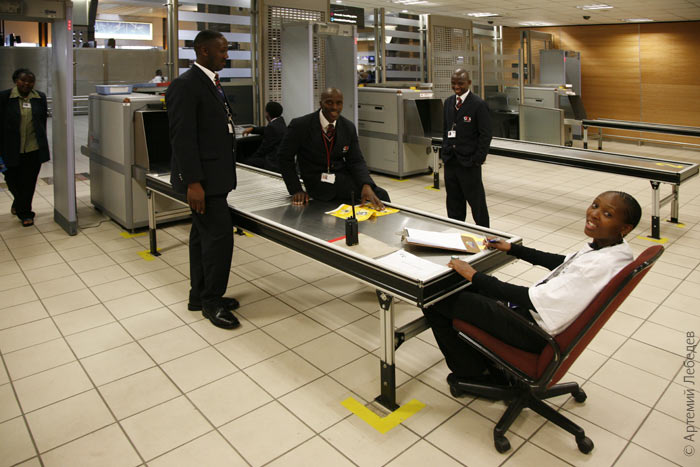 It would appear that there’s a law in South Africa that deems the owner of a building or a landholding liable for the health and safety of all of the people on his property. Also, clearly no one wants to be held to account under this law. That’s why on every hotel and on every shopping centre there’s a sign warning you that no one bears any liability for a visitor’s broken leg or even their death. The airport is no exception, so there’s a sign saying “enter at own risk” above every entrance. 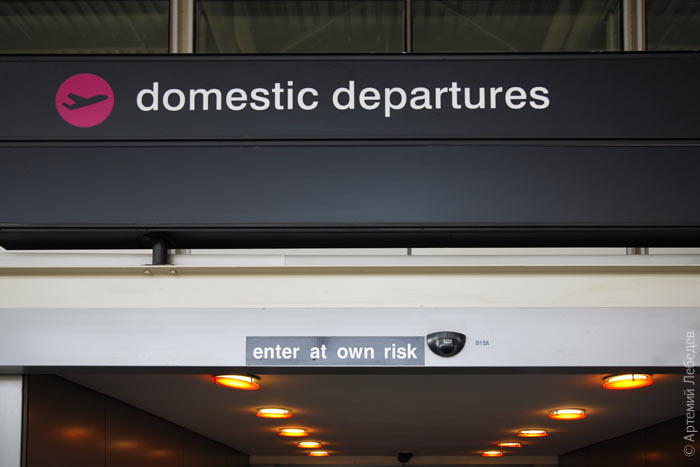 There hasn’t been any official racism in South Africa for a decade or so, although from time to time examples of subtle hints at apartheid crop up. For instance, here is an ad for airport porter services. It clearly shows a black person wearing what resembles a prison uniform with a permit issued by the airport administration around his neck, and a serial number on his sleeve. This is entitled “Your hands free kit”. Such a work of art could only have been created in an environment where residential separation is still thought to be perfectly natural. 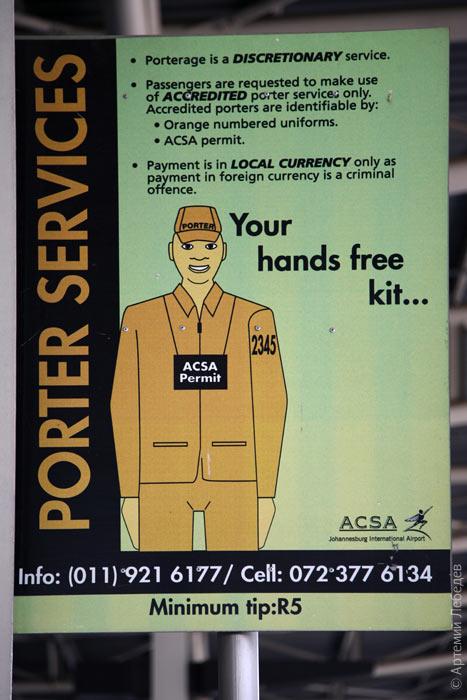 Here’s an ad for “unbeatable whiteness”. Had such a sign appeared in the US, it would’ve been the sole topic of conversation on TV for an entire month.  JohannesburgMapCapetown is a quiet, peaceable city. Tourists can even walk around it with their cameras. Johannesburg is a whole other kettle of fish. It’s war. The people living here are used to local “crime levels”. The only ones who don’t defend themselves are those with nothing for anyone to steal. All of the houses sit behind fences, there’s barbed wire everywhere. The city is clearly divided along social lines — whites, blacks, rich, poor. Note that, for the most part, it is the white and rich behind those fences. They’ve got delightful signs here banning the sale of oranges under an umbrella. 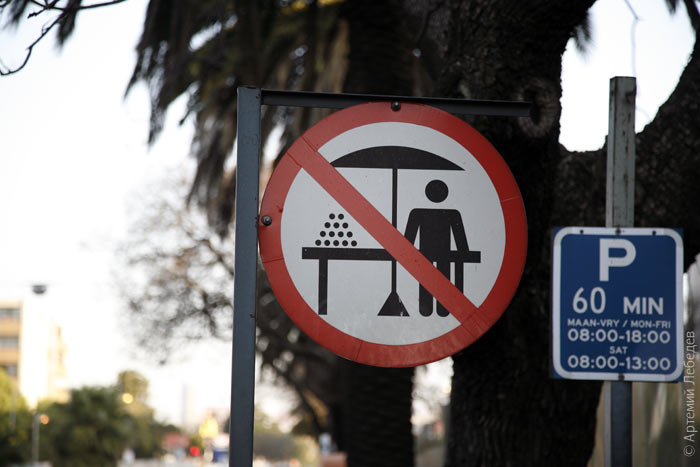 I wasn’t keen on the idea of wandering around on foot. For the very first time in my life I went to see a city strictly out of a car window. The route of our safari went through two shitholes — the neighbourhoods of Alexandra and Hillbrow. 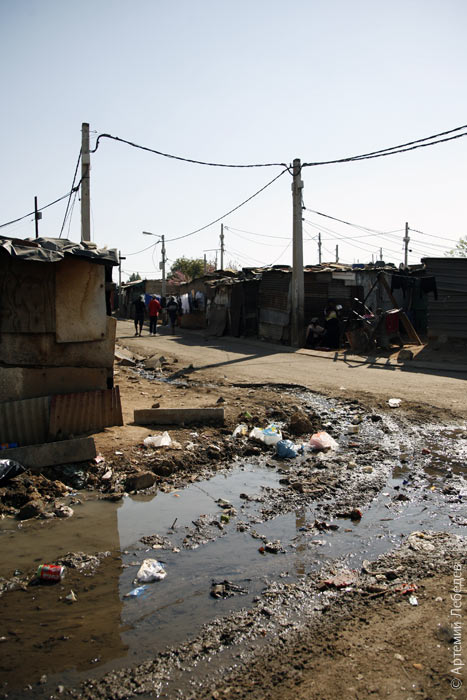 This is Alexandra. 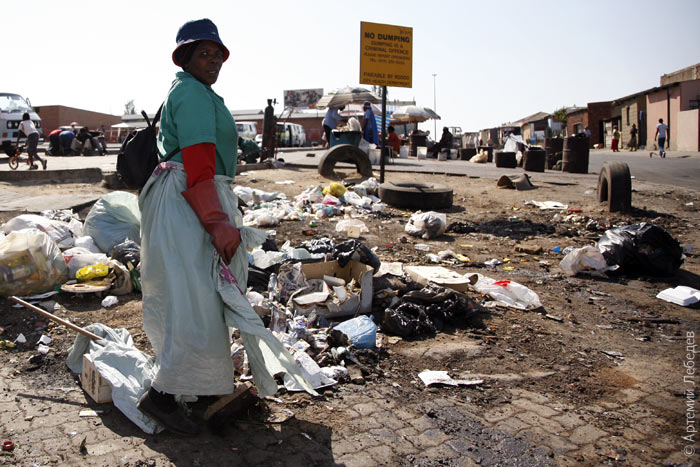 Only black people live here. 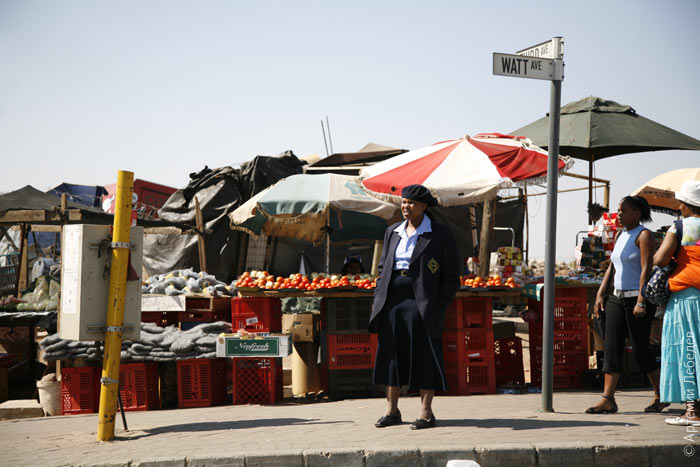 Electricity has been installed already. 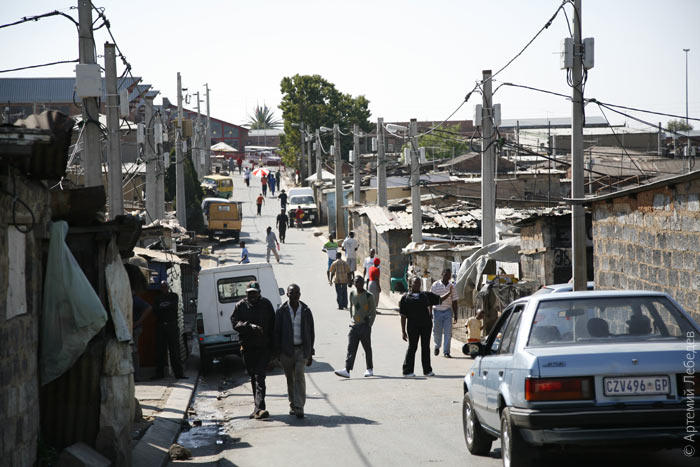 The street signage in Johannesburg is excellent — the signs are on kerbs at intersections. This is awfully convenient, especially when you’re waiting at a red light. They should do the same everywhere else. 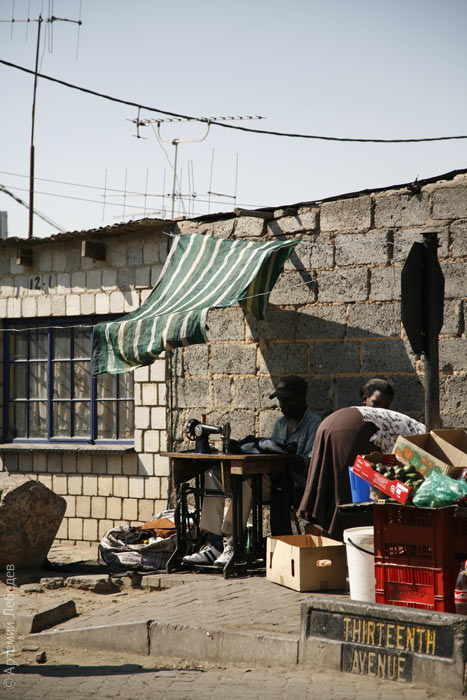 I felt good and at ease in Alexandra — my driver grew up here, went on to earn enough money to buy a white Mercedes, and now clearly took pleasure in greeting people he knew. 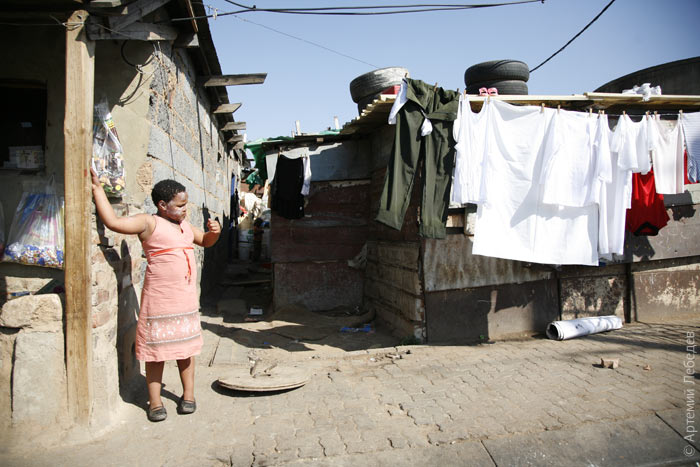 You could write a whole book about the visual art in poor neighbourhoods. 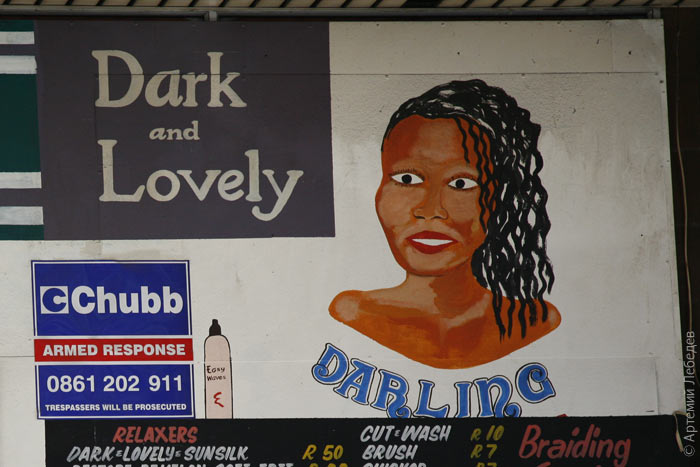 Portraits on hairdresser’s are the most common. Uh-huh-huh, uh-huh-huh, Beavis. 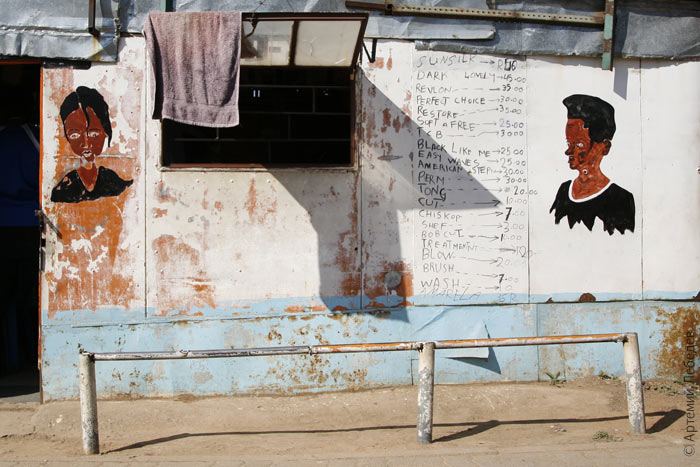 This is what they call a salon.  You can pop in and get all gussied up. 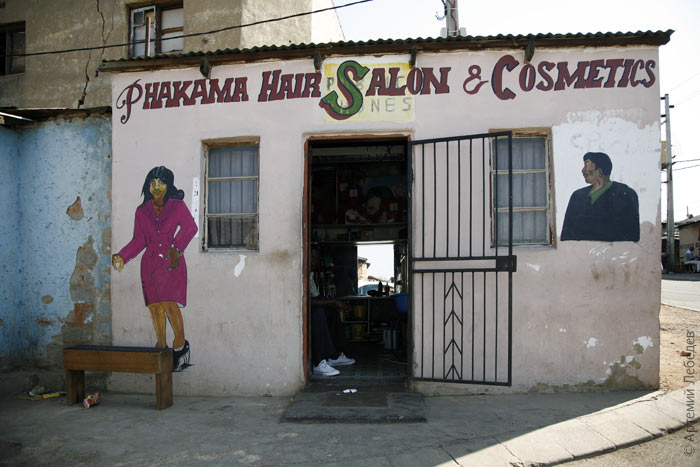 Not a single poor neighbourhood can get by without Coca Cola.  Although you still come across food joints that haven’t cut a single merchandising deal. 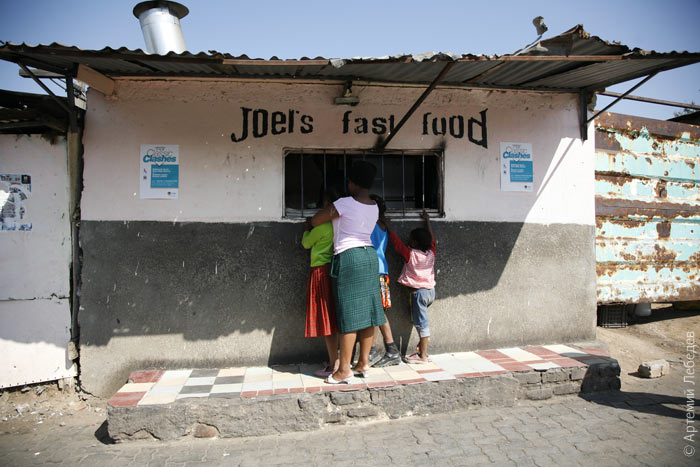 As a rule of thumb though, they’ve all cut a deal already. 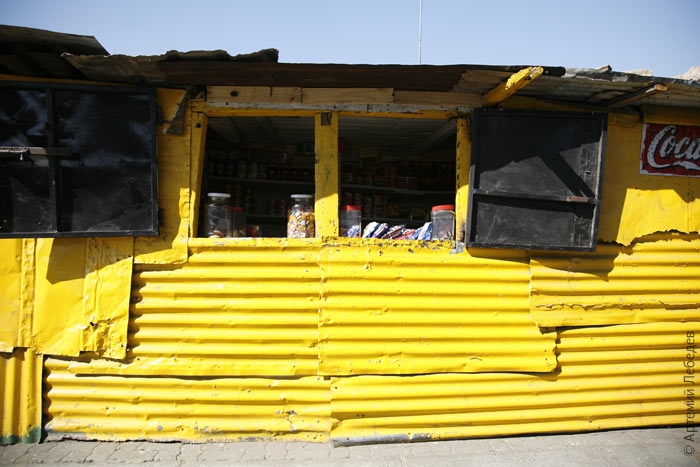 There are call shops all over the city (like in Mongolia). 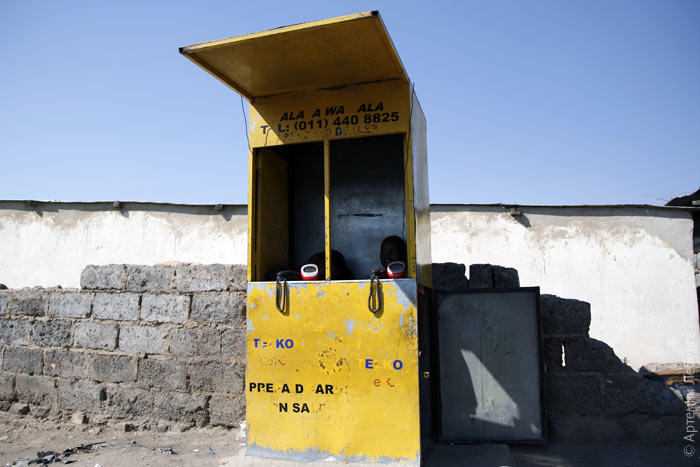 We are Hillbrow-bound. 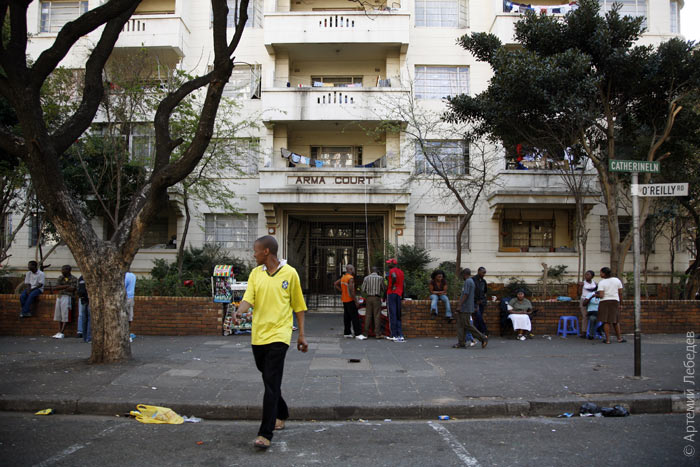 At one point this used to be the city’s business centre, complete with skyscrapers, hotels, restaurants, and cinemas. 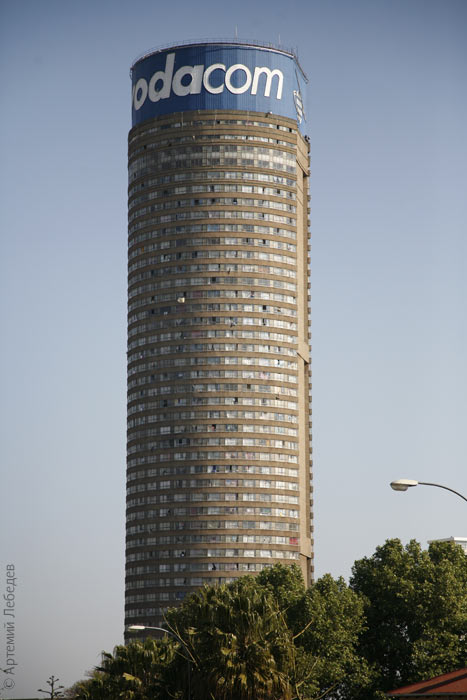 All of the buildings are still intact. But not a single one has been built in the last decade. And you get the impression that if someone’s window gets broken no one is going to install a new windowpane. 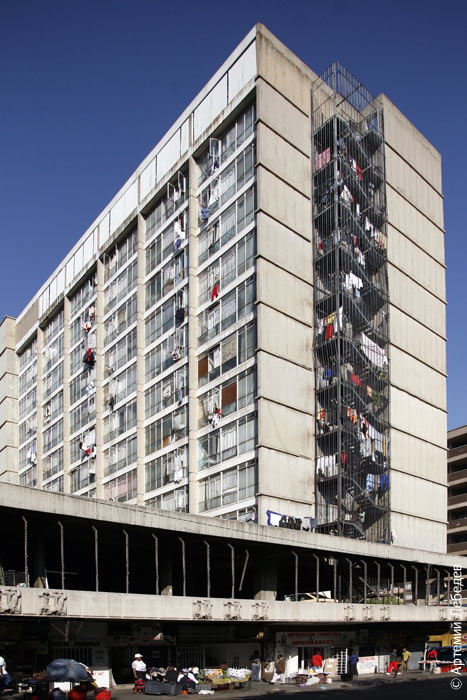 When blacks started moving in whites just picked up sticks at some the point and abandoned all of the houses. They left behind skyscrapers, shops, as well as cinemas and hotels. 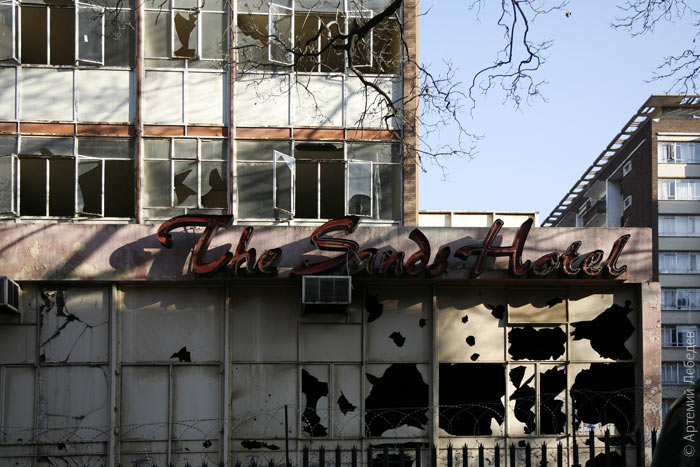 There’s a law in South Africa stipulating that you cannot evict a tenant if he has nowhere to go, even if he doesn’t pay rent. It goes without saying that there is no shortage of people who are able prove that they’ve got nowhere to go. And each one of them has ten relatives living in every room. 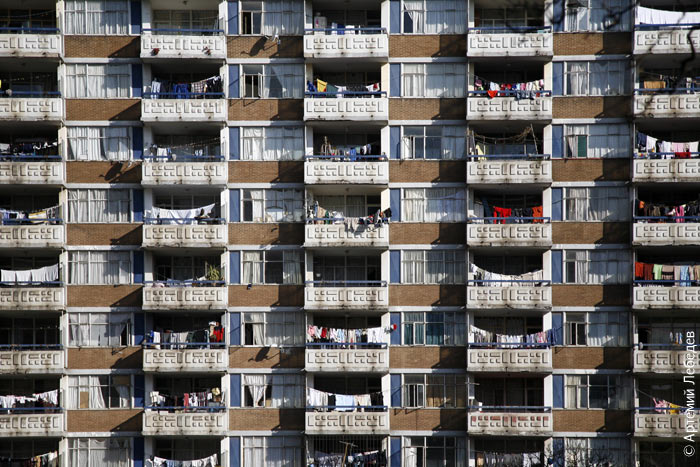 Back in the day this used to be a very pleasant neighbourhood. Middling real estate doesn’t have its name written out front (in Moscow, for instance, there are no more than ten houses with their name written on the facade). 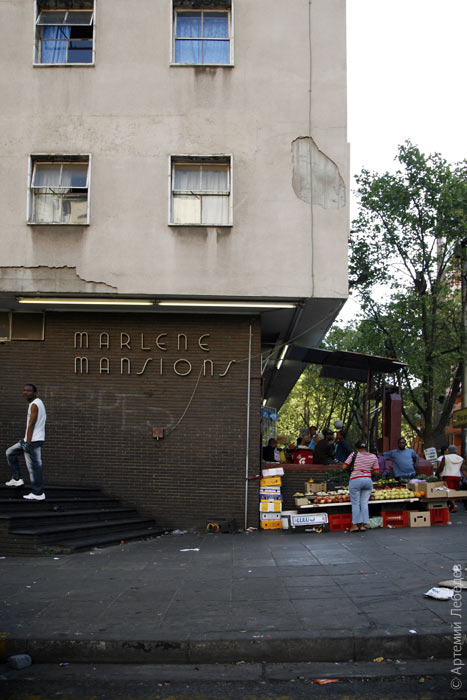 The only structure that wasn’t handed over to the blacks is the telephone tower (the telecoms tower is elsewhere). First of all, it’s exorbitantly expensive, and second, blacks have no use for it anyway. 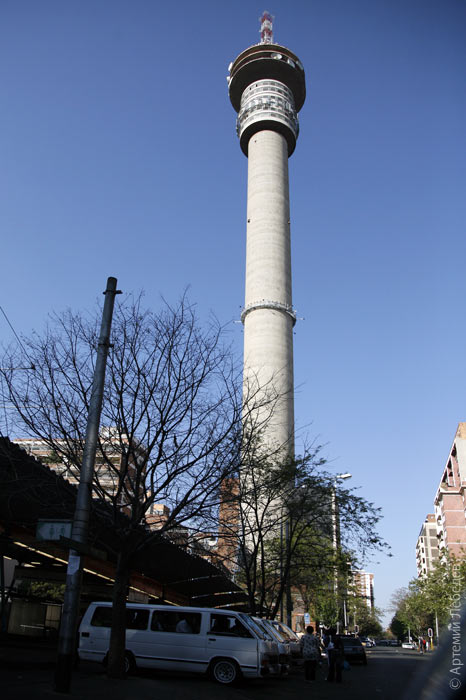 * * * Crocodile meat tastes either like chicken or like fish, I can’t quite tell. More like fish. But a chickeny fish. |